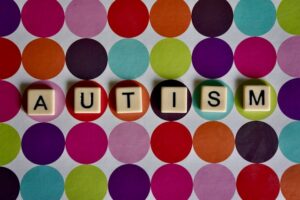 World Autism Awareness Day is observed annually on April 2nd. Thankfully, our medical understanding of autism spectrum disorder (ASD) is constantly improving. However, educating the public on these scientific breakthroughs is difficult. Given the scope and complexity of ASD research, it can be difficult to analyze & comprehend as a non-medical professional. Additionally, the perpetual advancement of ASD research means that our current knowledge is incomplete and subject to change. It’s completely normal to not fully understand ASD; but that’s why today is so important. World Autism Awareness Day is a chance to provide people with a glimpse into a reality that is unfamiliar to most & often misunderstood. Even if you don’t become an awareness advocate or a patron of ASD research, you can do your part in fostering a supportive community for those with ASD by learning even a little bit about the condition. Today, Bowman would like to recap the basics of ASD and share some fascinating recent research.
World Autism Awareness Day is observed annually on April 2nd. Thankfully, our medical understanding of autism spectrum disorder (ASD) is constantly improving. However, educating the public on these scientific breakthroughs is difficult. Given the scope and complexity of ASD research, it can be difficult to analyze & comprehend as a non-medical professional. Additionally, the perpetual advancement of ASD research means that our current knowledge is incomplete and subject to change. It’s completely normal to not fully understand ASD; but that’s why today is so important. World Autism Awareness Day is a chance to provide people with a glimpse into a reality that is unfamiliar to most & often misunderstood. Even if you don’t become an awareness advocate or a patron of ASD research, you can do your part in fostering a supportive community for those with ASD by learning even a little bit about the condition. Today, Bowman would like to recap the basics of ASD and share some fascinating recent research.
The Basics
Autism Spectrum Disorder, or ASD, can refer to a broad range of conditions according to Autism Speaks. ASD is characterized by “challenges with social communication skills and repetitive or restricted behaviors or thinking”. In other words, the physical and mental manifestations & severity of ASD may be unique to everyone. ASD is something that people are born with, not acquired. While the cause is not definitive, scientists believe it to be a mixture of both genetic & environmental factors. While anyone can have ASD, it is four times more prevalent in boys than in girls. Today, about 1 in 36 children are born with ASD, an increase compared to the rate of 1 in 45 adults.
Diagnosis
Symptoms of autism typically begin to become apparent at a young age but are not always properly recognized. Symptoms can be detectable as young as infancy, but commonly become apparent around the age of two, according to the Mayo Clinic. People that are left undiagnosed will often develop behaviors to “mask” their symptoms, which makes it difficult to diagnose high-functioning autistic adults. Common ways of diagnosing autism in children include hearing, speech, and language tests. Additionally, developmental levels of intelligence & social behavior are measured. Communication tests are measured using the Diagnostic and Statistical Manual of Mental Disorders (DSM-5-TR), published by the American Psychiatric Association.
Recent Study: Using CRISPR to Study Brain Development
Advancement in the field of neuroscience is happening at a breakneck pace. In order to study neurological disorders, such as ASD, schizophrenia, and epilepsy, scientists are looking at human genes first and foremost. They must get creative, due to the obvious ethical constraints of experimenting on living people; amazingly, researchers have cultivated synthetic structures dubbed “organoids” that resemble actual developed portions of a brain, the nervous system, and other parts of the human body that require genetic research. These start as stem cells and can organize into connected structures, the same as real human organ development.
Now that we have the “fake brains” to experiment with, scientists tackled another challenge: can we artificially edit the genetic code of these organoids? With today’s technology, now we can. The gene-editing process used for this work is known as CRISPR. Using CRISPR on these organoid samples, we can ethically perform gene-editing on a completely synthetic sample.
This experiment, published through Nature, used CRISPR to replicate common developmental disorders, and observed the effect on the organoid’s interneurons. Interneurons are the connections in the brain that inhibit or divert brain activity. When the brain does not develop normally (as is the case in ASD), it is largely due to disturbances with these interneurons. CRISPR allows scientists to study “the effects of many genes at the same time, and identify the ones that affect a particular type of cell or cell function during brain development”, according to University of Pennsylvania professor Dr. Guo-li Ming in a NPR article reviewing this experiment.
What Can I Do?
There are many ways to contribute to ASD-related causes. This includes research, care resources, awareness campaigns, and more. We encourage everyone to research organizations & programs, and to get involved however you think you can make the biggest difference.
References & Further Information
- Autism Speaks | “What is Autism?” – https://www.autismspeaks.org/what-autism
- Mayo Clinic | “Autism Spectrum Disorder: Diagnosis & Treatment” – Autism spectrum disorder – Diagnosis and treatment – Mayo Clinic
- Mayo Clinic | “Autism Spectrum Disorder: Symptoms & Causes” – Autism spectrum disorder – Symptoms and causes – Mayo Clinic
- Nature | “Assembloid CRISPR Screens Reveal Impact of Disease Genes in Human Neurodevelopment” – https://www.nature.com/articles/s41586-023-06564-w#Abs1
- NeuroscienceNews.com | “Topics: Autism” – https://neurosciencenews.com/neuroscience-topics/autism/
- NPR | “Brain Cells, Interrupted: How Some Genes May Cause Autism, Epilepsy and Schizophrenia” – https://www.npr.org/sections/health-shots/2023/10/02/1202749791/new-tool-study-genetics-autism-schizophrenia-brain-disorders
